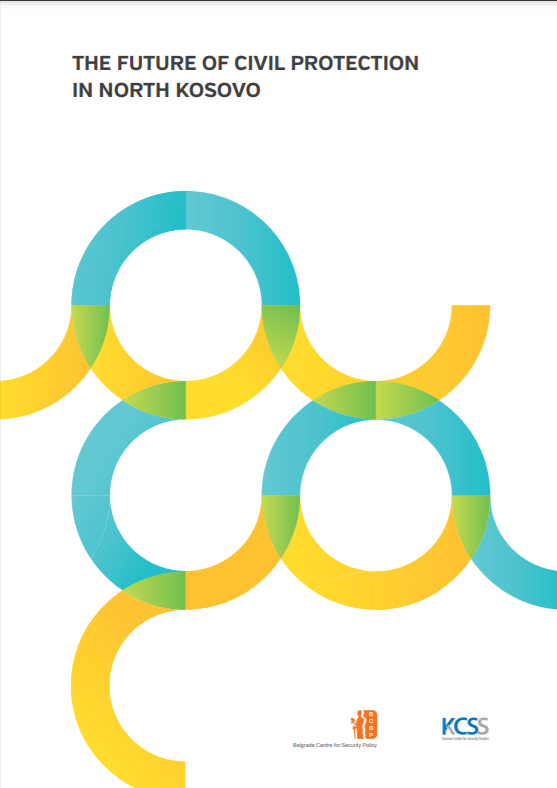27/04/2015

Kosovar Centre for Security Studies (KCSS) and Belgrade Center for Security Policy (BCSP)
Government of the Kingdom of Norway
Isidora Stakić, Maja Bjeloś, Sofije Kryeziu
Civil Protection units in North Kosovo operate outside Kosovo’s legal framework, despite the fact that the Brussels Agreement implicitly envisages the dissolution of all parallel Serbian security structures existing in Kosovo. While the Serbian community in North Kosovo sees CP as a civilian structure with the sole purpose of providing assistance to civilians in emergency situations, the Kosovo government, as well as the international institutions which operate in Kosovo, perceive CP as an illegal paramilitary structure that must be dissolved.
During their field research, carried out in February and March 2015, the authors found there to be 751 personnel of CP units, among whom are a number of persons who lack the security background necessary for protection and rescue tasks, while some personnel are former military officers. Although the official mandate of CP units in North Kosovo is to assist the civilian population in emergency situations, these units frequently perform other tasks, such as road maintenance, bridge repairs, securing buildings, etc. Apart from the CP units, there is only one firefighting unit in North Kosovo, which operates as part of the Kosovo Emergency Management Agency (EMA) and is composed of approximately 30 firefighters. There are some indications that individual members of CP units have occasionally been involved in political protests, as well as the suspicion that some of them have been involved in political violence and organised crime. According to the Agreementon Civil Protection reached on 26 March 2015 in the EU mediated dialogue between Prishtina and Belgrade, CP units in North Kosovo are currently supported and financed by the Serbian government.
The CP Agreement provides for the integration of 483 CP personnel into Kosovo’s institutions as well as providing for 50 positions to be paid for from contingency funds. It is in line with the Kosovo government’s plan for CP integration that it is envisaged that CP units will be integrated into Kosovo’s central level institutions, and that their personnel will be dispersed among a number of governmental bodies and agencies. However, the agreement also implies that 218 CP personnel will remain jobless and without income. A number of challenges will need to be addressed in regards to the integration plan, including the inability of Kosovo’s institutions to absorb entire CP units, the unwillingness of CP personnel to become part of Kosovo’s structures and the need to provide alternative sources of income for those who will remain jobless. Despite the fact that the official plan for the integration of North Kosovo’s CP units has now been published, it remains largely unknown to the general public and CP staff, which might present additional challenges during its implementation.
This publication was published by Belgrade Centre for Security Policy and Kosovar Centre for Security Studies. This publication was produced in the framework of the project “Security Research Forum: Belgrade- Prishtina-Tirana” supported by the Government of the Kingdom of Norway. Research was supported by the Balkans Trust for Democracy’s Professional Work Exchange Program for Enhanced Policy Dialogue, with the support of the Foreign and Commonwealth Office of the United Kingdom. The views and analysis contained in this publication are those of the authors and do not necessarily represent the views of the Norwegian and UK governments or any of their affiliated organizations.